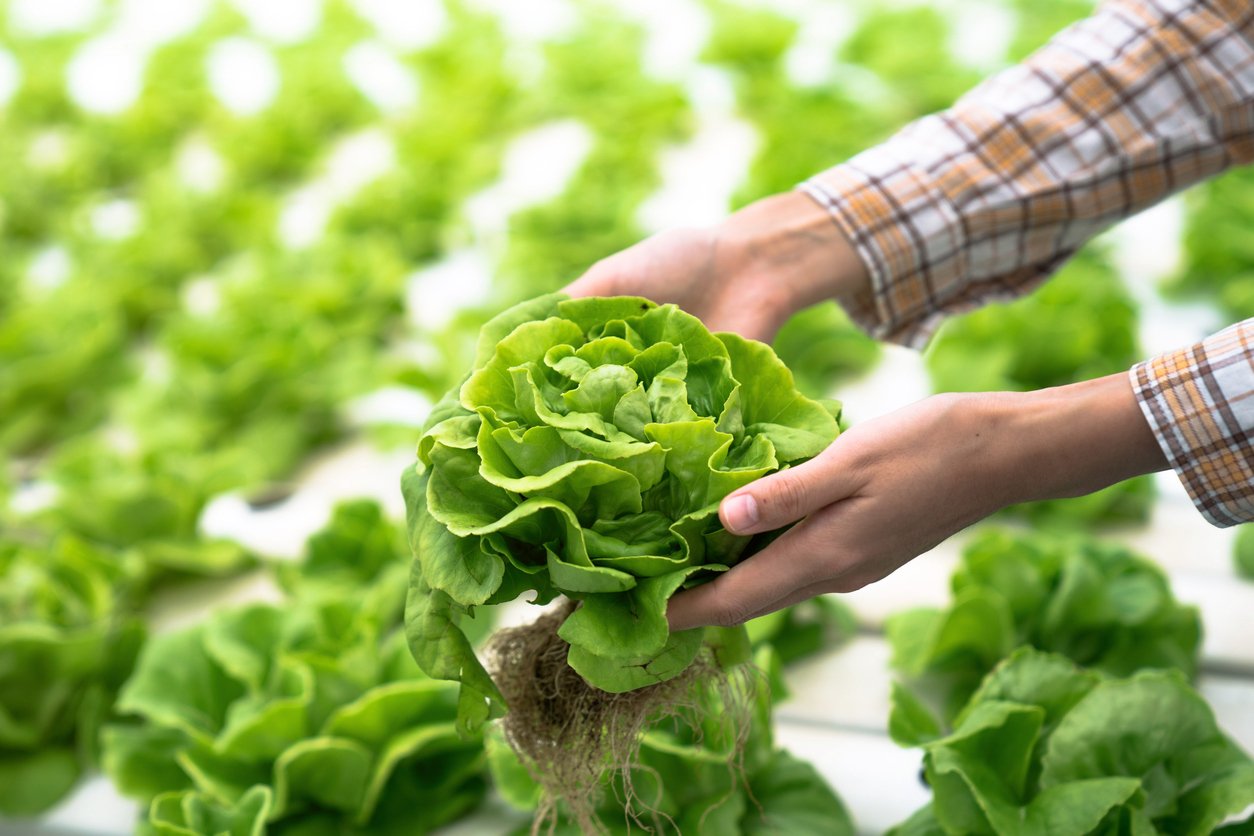Characters in Star Trek: The Next Generation could synthesize their favorite foods using a machine called a replicator. Resembling a microwave oven, the device was essentially a 3D printer on a molecular level. The Jetsons had a similar appliance, known as a Foodarackacycle, that looked more like a vending machine.
Another food innovation you might think exists only in science fiction is the ability to grow crops without soil. However, variations on this technology have actually been around for thousands of years: the Hanging Gardens of Babylon and the Floating Garden of China being two prime examples.
The contemporary incarnation of soilless gardening was christened “hydroponics” by William Frederick Gericke, an early 20th-century plant nutritionist who silenced his doubters by more or less inundating them with tomatoes.
As the Earth faces the challenges of climate change, food insecurity, and urbanization, hydroponics has emerged as a potentially helpful and sustainable tool that’s useful worldwide, regardless of the climate or conditions of the land. It may also be a meritable alternative to field- and garden-based farming for urban dwellers, environmental enthusiasts, and those seeking to cultivate fresh produce year-round.
Could hydroponics be in your future? If so, what do you need to know to start growing food hydroponically? What are some of the best edible plants to grow? And how can you use hydroponically grown plants in your diet? Look no further!
Let’s dive into the best edible plants for hydroponic growing, and how to use them in recipes.
Why Grow Food with Hydroponics?
There are, of course, downsides to hydroponics — including extensive use of plastic, dependence on energy-hungry grow lights, and the reality that large-scale operations require costly infrastructural setup. But hydroponics also offers several advantages over traditional gardening and farming methods. Let’s look at a few of them.
Hydroponics Water Efficiency
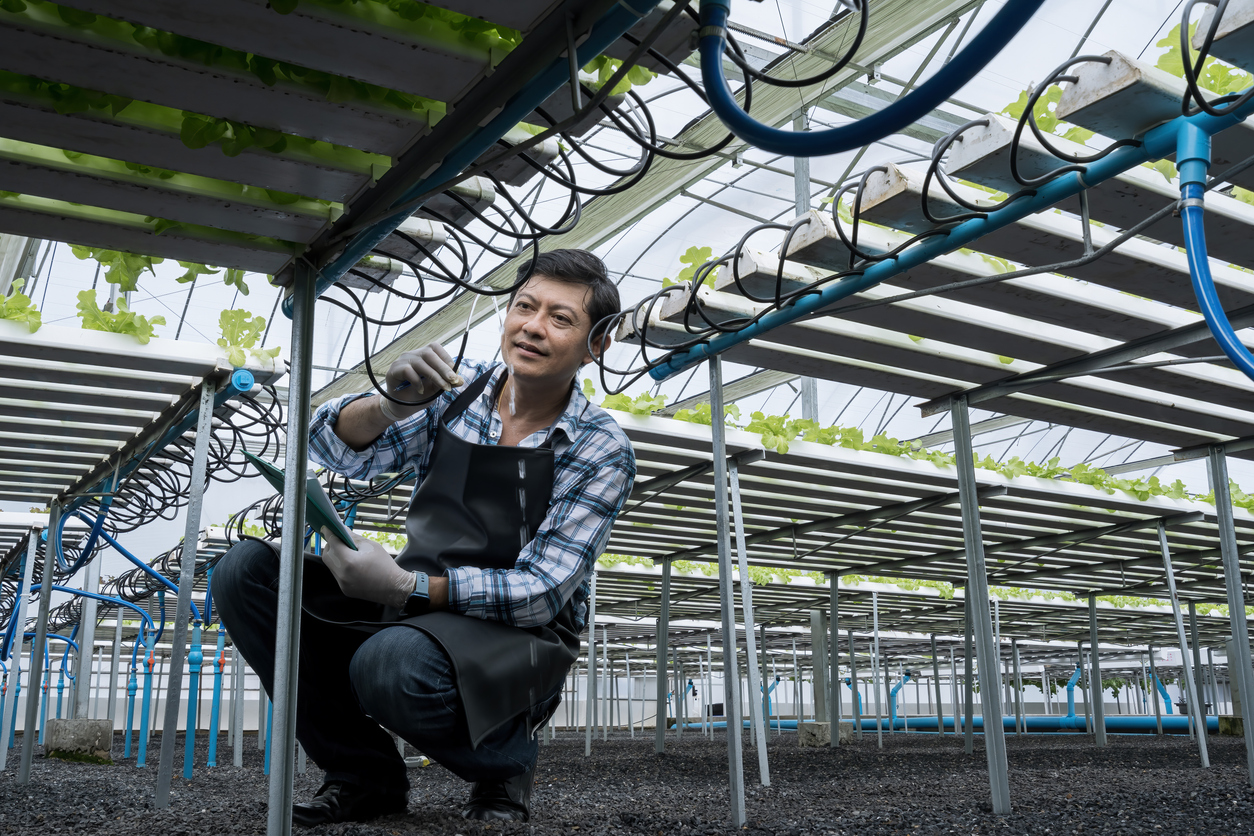
In a hydroponic system, water gets recirculated rather than being lost through drainage or evaporation. This is huge because industrial agriculture uses up a great deal of the earth’s groundwater supply, which is in steep decline in many parts of the world. In a hydroponic system, by contrast, water and nutrients are delivered directly to the plant roots through a nutrient solution, which minimizes water loss. This enables farmers to grow food with significantly less water than traditional methods.
Because hydroponically grown plants don’t rely on rainfall or irrigation via underground aquifers, they are less susceptible to drought stress. Instead, they have constant access to all the water and nutrients they need. In a world where droughts are becoming ever more frequent, severe, and pervasive due to climate destabilization, hydroponic solutions could protect the food supply in susceptible regions.
Pollution and Pesticide Reduction
Commercial agriculture not only wastes large quantities of water, but it also pollutes it before returning it to the water cycle. Hydroponics eliminates runoff and pollution of water sources by fertilizers and pesticides. In fact, hydroponics can significantly reduce (or even eliminate) the use of pesticides because the absence of soil means that most potential pathogens have nowhere to call home in a hydroponic setup.
While chemicals may still be used in hydroponic farming, many home-based systems can be maintained without resorting to using pesticides or other harmful agricultural chemicals.
Space Utilization
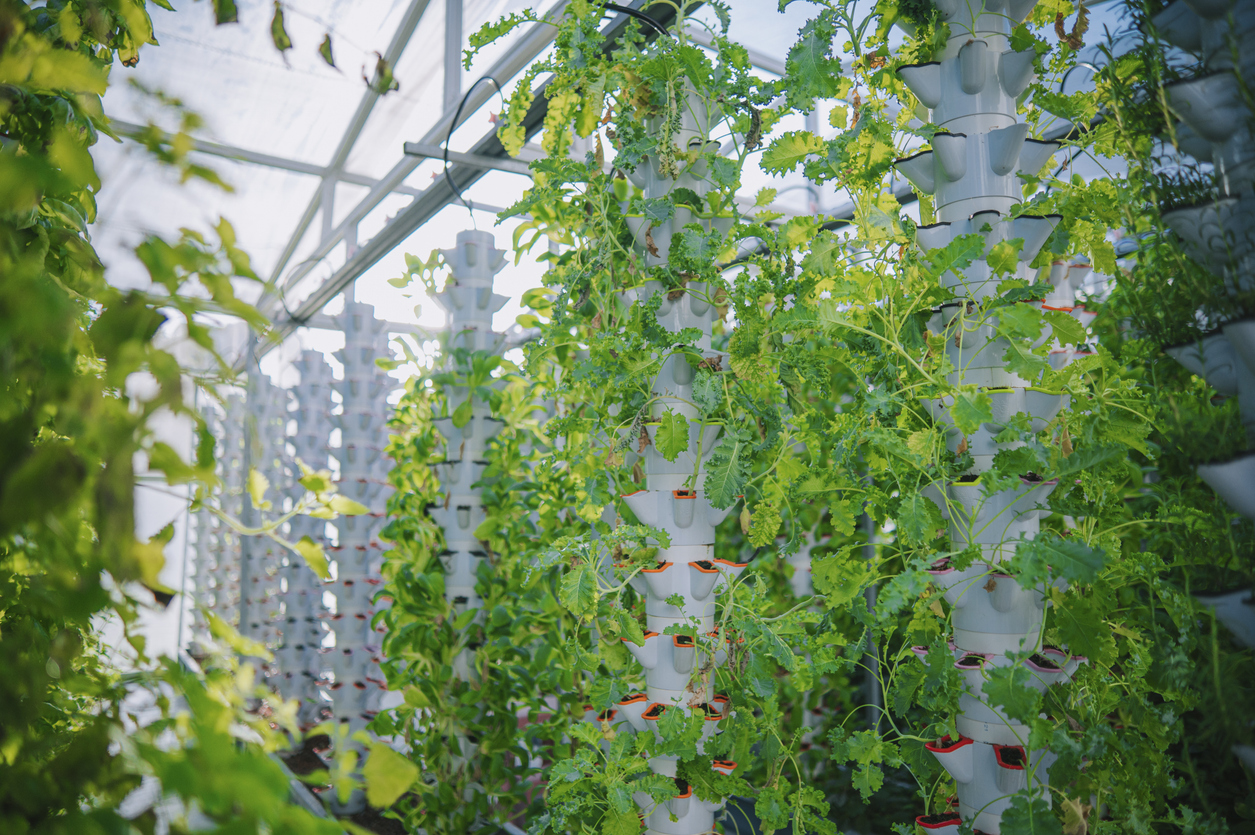
Since plants grown hydroponically don’t need to be stuck in the ground, they aren’t stuck on the ground. Vertical stacking is often used to grow a greater number of plants in a small space. Hydroponic garden towers may take up as little as two square feet of floor space, and smaller units can be set up on countertops. This makes them ideal for small spaces like apartments and other areas where outdoor gardening isn’t possible. (Like outer space, despite what Matt Damon managed to accomplish in The Martian.)
It’s not just the verticality that allows for greater planting density. Hydroponic plants can be spaced closer together than in soil because they’re not competing for nutrients.
Year-Round Growth
Many northern hemisphere gardeners start growing antsy in the middle of winter — when they can start salivating over seed catalogs, but planting in soil is still a month or two away. Hydroponic gardeners don’t have this problem, since these systems can grow food anywhere on Earth (or Mars) at any time of the year.
And since hydroponic gardens produce crops regardless of weather conditions, availability of cultivable land, or soil quality, there’s no such thing as “out of season.”
Faster Results
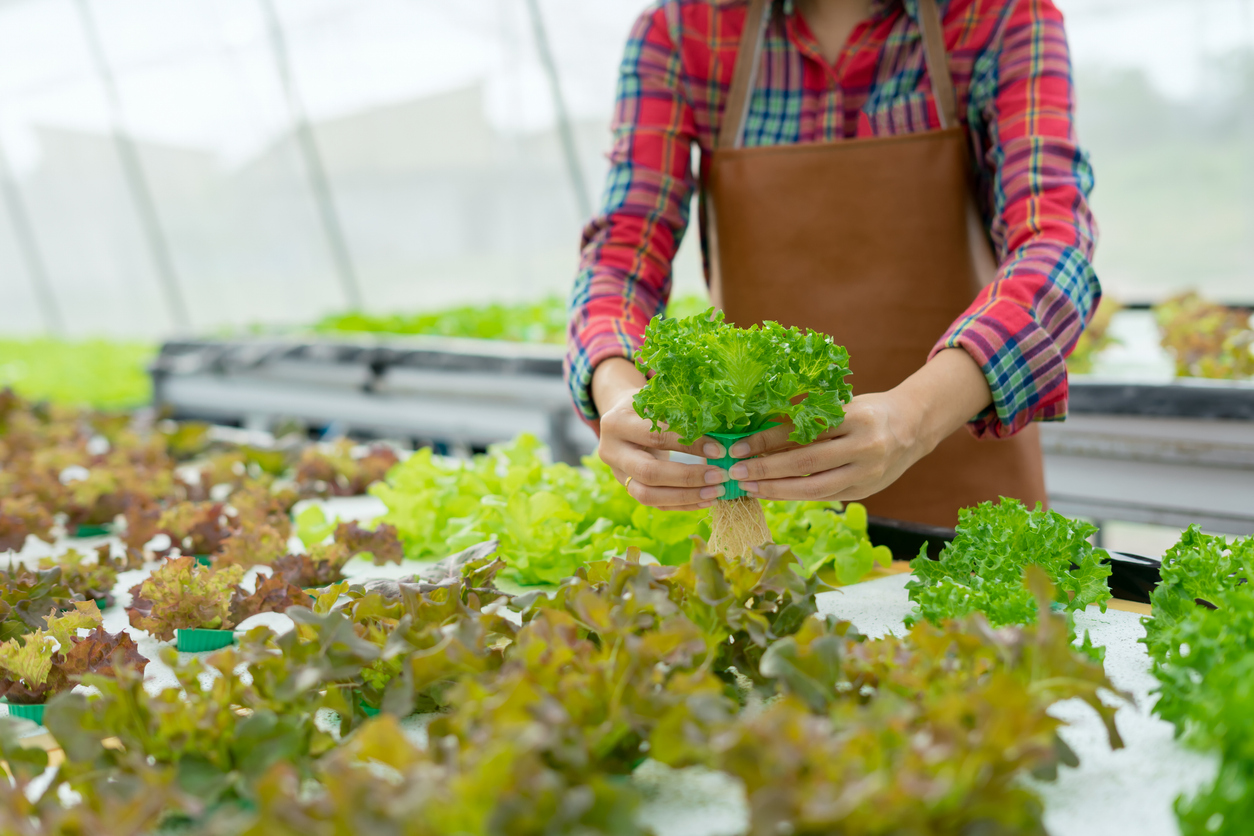
Hydroponic plants root and grow faster — up to 40–50% faster — than plants grown in soil. Because a constant supply of nutrients directly reaches their roots, plants don’t need to expend as much energy seeking out those nutrients (kind of like Doordash or UberEats for tomato vines). The constant supply of oxygen (from bubbles pumped into the water — see below) also helps plants grow faster.
They not only grow faster but, in many cases, are more nutritionally dense than soil-based plants. This makes them helpful for combating food deserts, and also for providing food to cafeterias in schools, hospitals, and other large-scale operations that feed a lot of people.
Basic Components of a Hydroponic System
So what exactly do you need if you want to get started? And what are your options for no-frills, regular, and advanced hydroponic food gardening? Let’s take a look.
Growing Mediums for Hydroponics
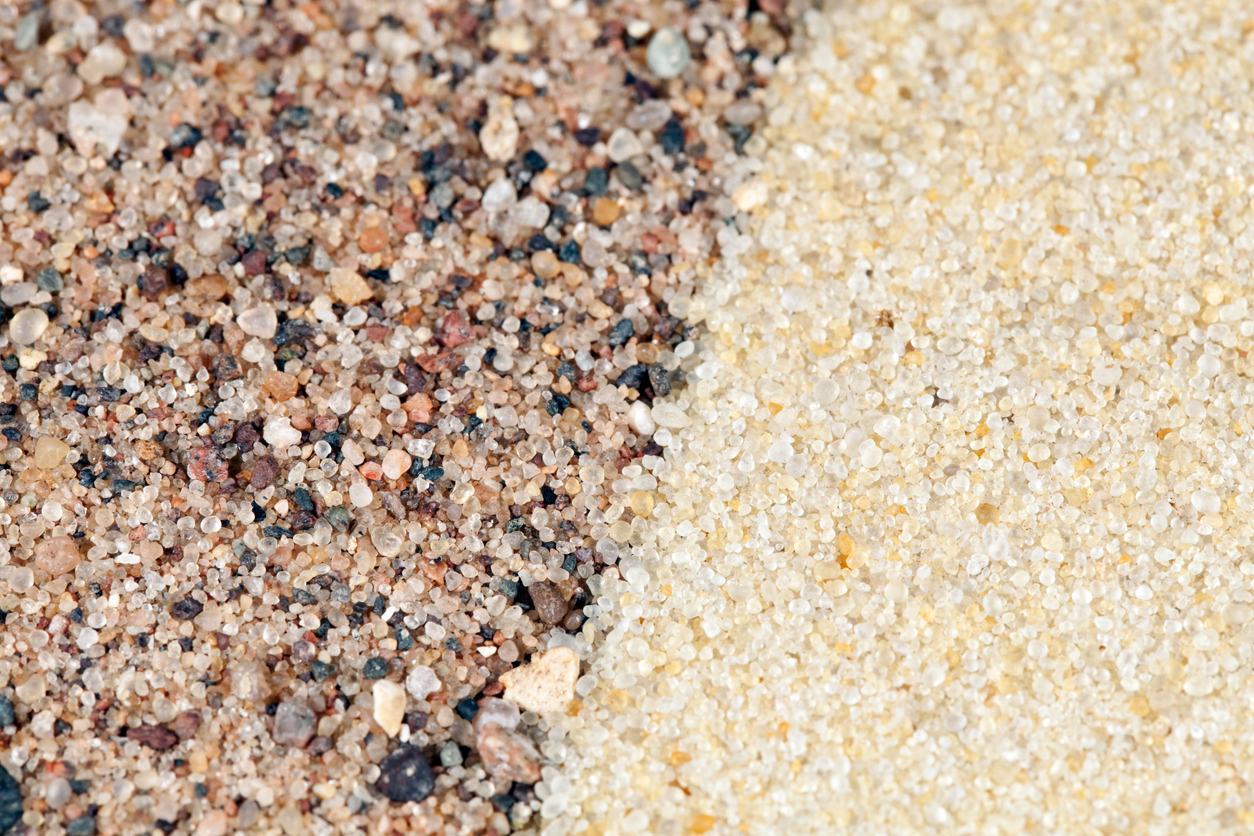
In the absence of soil, you need something to hold the plants in place physically, while also allowing the right amounts of air and water to reach them. There are several types of growing mediums, and the one you select will depend on the type of plants you want to grow, the pH of the water you’ll be using, the cost, and the type of system you’ll be using.
Leafy greens typically do well in lightweight, well-aerated mediums, while fruiting plants may require a medium with higher water retention.
Popular types of growing mediums include:
- coconut coir (that’s the hairs of the coconut fruit, and not a misspelled group of Harry Nilsson backup singers)
- peat
- pine bark
- mineral wool
- growstone
- perlite
- sand
And there’s even a subset of hydroponics, called aeroponics, that requires only light, water, and nutrients, and does not use a growing medium at all.
Hydroponic Nutrient Solutions
One of the efficiencies of hydroponics is the ability to tailor nutrient concentrations for each type of crop. Plant nutrients are supplied through nutrient solutions. They can be at normal or concentrated strengths, and can be put together through fertilizer programs, recipes, or even complete fertilizers.
Fertilizer programs are among the easiest to use, but may also be a costly way to go. You get a complete fertilizer supplemented with the macronutrients that plants need (nitrogen, potassium, and phosphorus, also known by their secret nicknames N, K, and P). They’re usually synthetic, but organic formulations are sometimes available. The organic ones may require more trial and error to get the right amount of nutrients and ensure the correct pH.
Recipes are the DIY solutions for hydroponic growers. You can find them online, through university agricultural extension services. A recipe specifies the amount of each nutrient to add to the nutrient solution, and growers can calculate how much fertilizer to add to their solution based on the size and concentration of their system.
Complete fertilizers provide the three plant macronutrients, typically based on the nitrogen requirements of the crop, as well as other micronutrients. While this simplifies things by requiring just one purchase, a downside is that the formulation may not provide enough of certain nutrients.
Water and Oxygen Supply
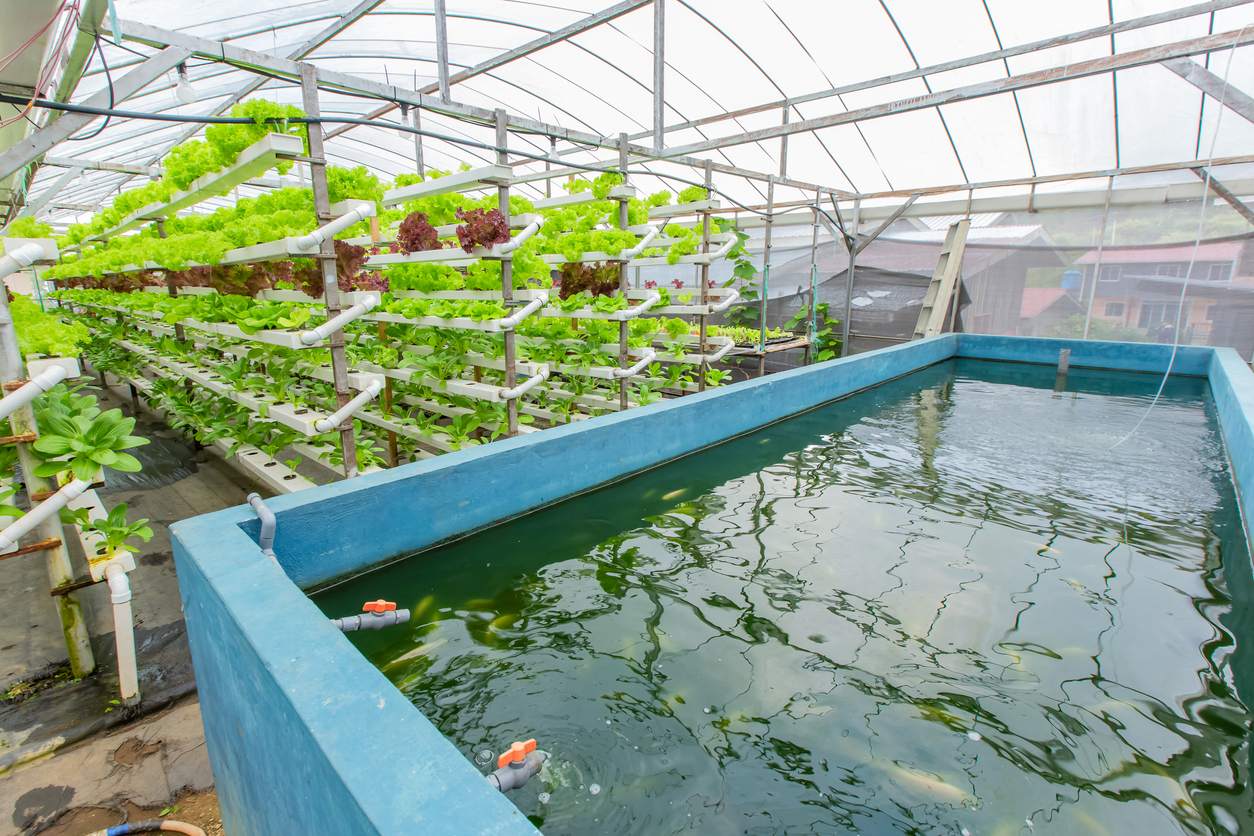
Plant roots need oxygen for growth and other metabolic processes. Hydroponic systems provide oxygen through air and water. The air is courtesy of the porosity of the growing medium, and the water is oxygenated (that is, extra O2 dissolves into the H2O). Growers have several ways of oxygenating water, including using air pumps, air stones, auto-siphoning systems, cascading water areas, air diffusers, and hydrogen peroxide.
Light Source
Just like other terrestrial plants, hydroponic plants produce their food via photosynthesis — which means they need light to grow. In order to grow crops indoors, you need to replace at least some natural light with artificial light options. And not just replace, but mimic the photoperiod (hours of daylight) that best helps the plants to naturally thrive outdoors.
If you want to do this, you will aim to set up your lighting to simulate the seasons and regions in which your crop grows at its best (planting calendars and hardiness charts can be helpful here).
It’s not just the length of daylight. Intensity, light spectrum, and distance from the light source also matter. Err on the side of brighter light if you’re not sure. The light color — cooler or warmer — will depend on your goals for the plant, as well as the type of plant.
In terms of distance, most experts recommend starting your lights around 12 inches above your plants.
There are a few types of light bulbs that can be used in hydroponics. LED lighting is considered the best option, but other possibilities include fluorescent, metal halide, and high-pressure sodium bulbs.
Where to Buy Hydroponics Supplies
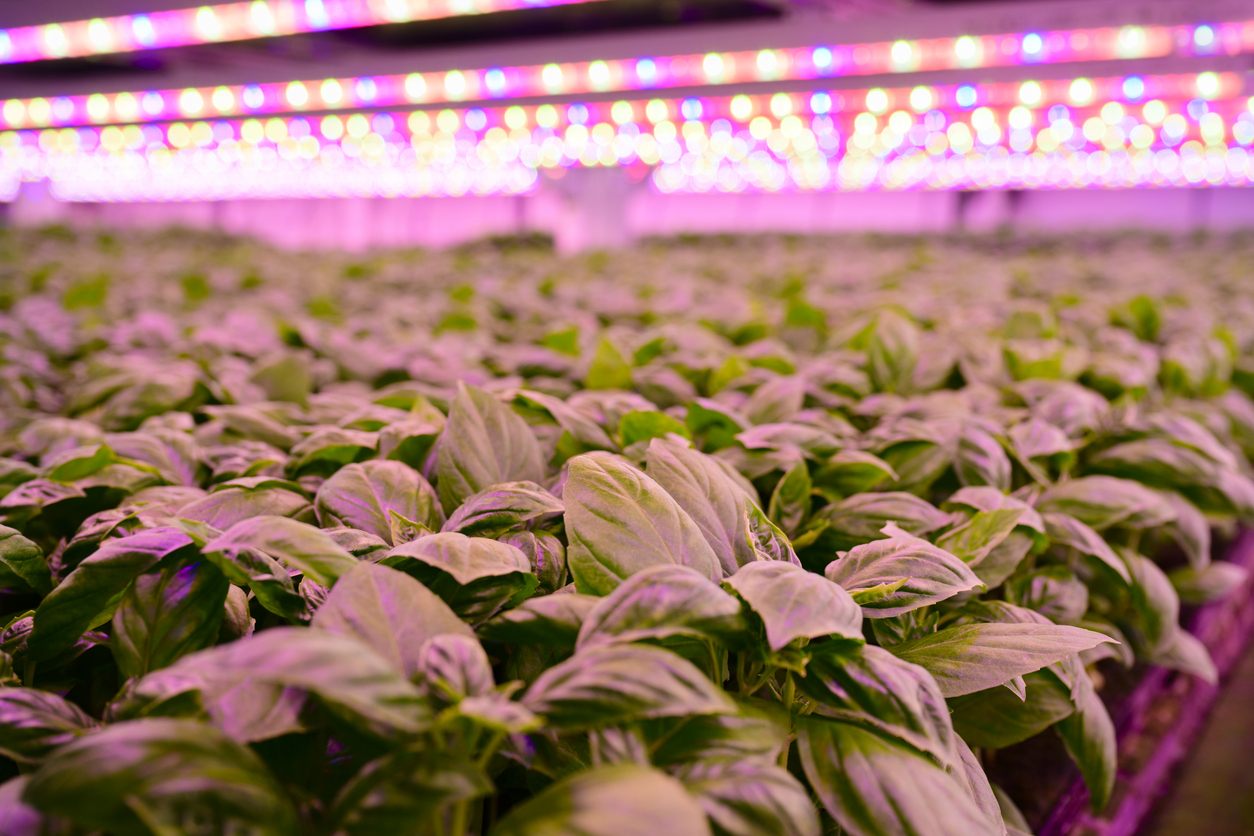
One of the best places to find a wide selection and good prices is online. Many online sellers offer hydroponic-specific brands, and there are also companies that make all-in-one grow kits that work with either tabletop or tower-style gardens.
If you’re handy and know your way around a hardware store (at least the plumbing section of a hardware store), you may be able to DIY parts of a hydroponics system using repurposed or general-purpose materials, such as buckets and tools. You also might already have them lying around or be able to get them low-cost from a home improvement store. YouTube offers many tutorials showing you how to build your own system from scratch.
Some cities have dedicated hydroponics stores, or specialty gardening stores that have hydroponics sections. If you’re a beginner and can visit one of these establishments, that may be an ideal way to get started. You can talk with employees, ask questions, and get recommendations for your specific situation and goals.
Best Plants for Hydroponics (That You Can Eat!)
Growing your own food has many benefits. For one, fresh produce just tastes better than store-bought — especially if it’s recently picked and not sent across the country in an 18-wheeler. You can also avoid all the packaging, including single-use plastic, when you grow your own food.
These are a few of the best plants to grow hydroponically.
1. Leafy Green Vegetables
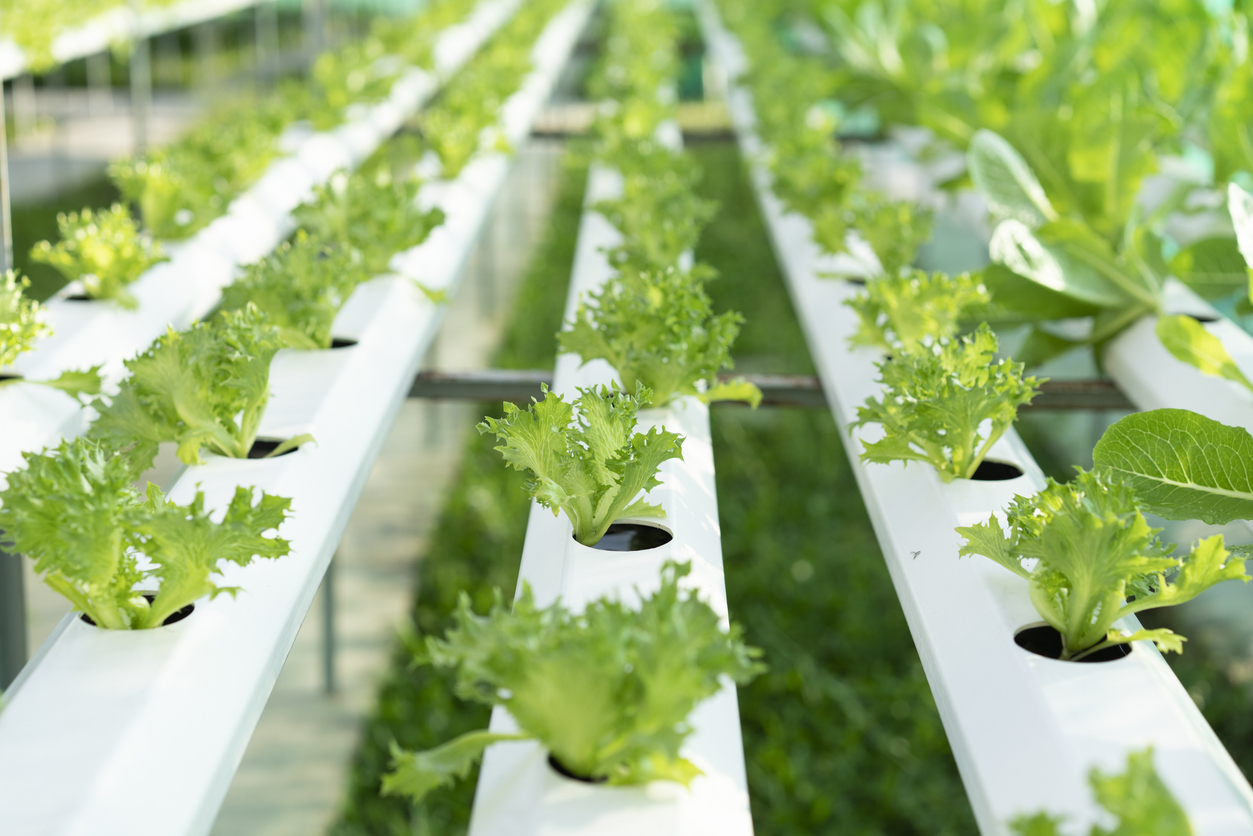
You can grow leafy greens from seeds or cuttings. And if you’re in a rush, you don’t even have to wait until they grow up. Microgreens can be ready within a week of planting. And you can clip exactly as much as you’re going to eat because you can harvest leaves from a single plant multiple times.
Leafy greens in the garden have their favorite growing season, and all of them tend to bolt when the temperature gets too hot. Since you can control the temperature with hydroponics, hydroponic greens won’t bolt, and will therefore have a much longer, yummy life.
Some of the easiest leafy greens to grow in hydroponics are lettuce, spinach, kale, and Swiss chard. They will appreciate 12–16 hours of light a day and a temperature around 66–75 degrees F (which translates to 19–24 degrees C).
Hydroponic leafy greens want the water pH slightly acidic, from 5.5–6.5. Techniques include NFT, deep water culture (DWC), and vertical systems.
2. Herbs
Many recipes use only a small amount of an herb. If you need just a chopped teaspoon or tablespoon, snipping it off the living plant eliminates waste. Cilantro, basil, sage, parsley, and mint are all popular hydroponic choices. Grow the ones you’ll use frequently. (If you’ve got that “cilantro tastes like soap” gene, you’ll probably give that one a pass and go for parsley instead.)
Also, most herbs are compact and don’t require a lot of space to grow, making them ideal for growing hydroponically. They also grow relatively quickly, so getting started with herbs will give you some rapid positive feedback for your efforts.
If you’re chomping at the DIY bit, here’s a guide to setting up your own herb system.
Hydroponic herbs typically thrive on 14–16 hours of light per day at temperatures from 60–70 degrees F (that’s around 15–21 degrees C). Techniques to use include ebb and flow, flood and drain, and nutrient film technique (NFT).
3. Tomatoes
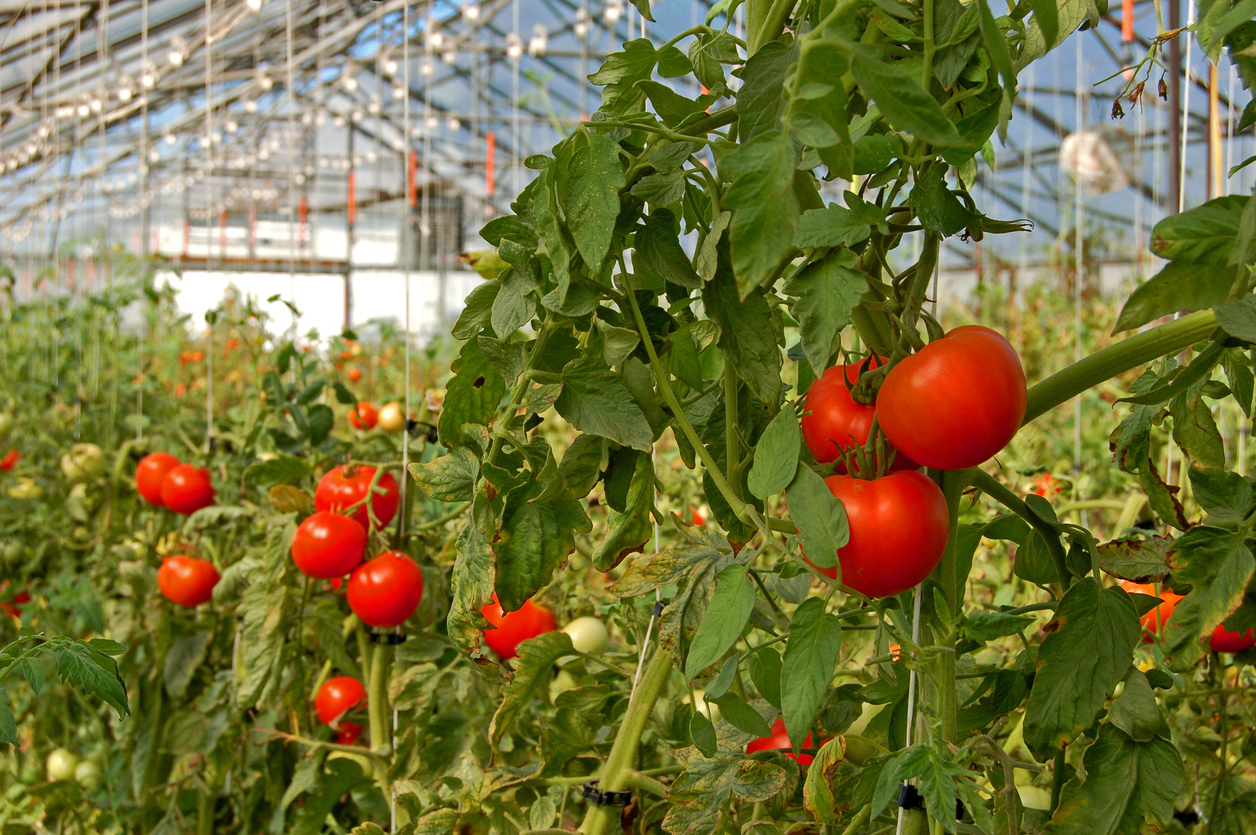
Tomatoes are the original hydroponic heroes, ever since William Gericke proved the method’s potential by growing an entire ton of tomatoes (that’s a measurement, not a metaphor) in around 10 square feet.
Tomatoes like a lot of water and are also hungry for nutrients, which makes them perfect hydroponic crops. The dwarf varieties are best for hydroponic systems.
They’re much less work hydroponically than in a garden, requiring less maintenance and pruning because of the controlled environment. Tomato root systems are smaller, and the rest of the plant grows more abundantly, which allows them to produce more fruit.
Bush varieties of tomatoes are better suited for home hydroponic systems because they spread out horizontally rather than growing vertically.
Hydroponic tomatoes appreciate a minimum of 8–10 hours of light per day, with more required as the plant matures. They thrive at 65–77 degrees F (18–25 degrees C) and at a pH of 5.8–6.3. They do best in DWC, NFT, aeroponic, and drip systems.
4. Strawberries
Strawberries grown hydroponically may look much healthier and more luscious than their soil-grown counterparts because the plants are less susceptible to pests and diseases.
Their shallow root system makes them a good plant to grow hydroponically. You can grow strawberries vertically, or even hung up, which makes picking them far more ergonomic than squatting in a garden bed looking for ripe berries.
Hydroponic strawberries respectfully request 14–16 hours of light per day, at a temperature around 65–75 degrees F (18–25 degrees C), and at a pH of 5.8–6.2. Techniques include NFT and vertical.
5. Peppers

Peppers can thrive or struggle in a garden, depending on a variety of factors like temperature and humidity that are easy to control in hydroponic systems. Hydroponics recirculate water, which peppers love due to their consistent moisture requirements. (If a pepper plant was a toddler, it’d be the one complaining about being thirsty and wanting a cup of water all night.)
You can grow mild bell peppers as well as some very hot ones (including chili and Thai varieties). Hydroponic peppers ideally need 12–14 hours of light per day, temperatures of 70–85 degrees F (21–30 degrees C), and a pH of 5.8–6.2. Techniques include NFT, DWC, and ebb and flow.
6. Cucumbers
Cucumbers are often supported by a trellis in conventional gardening, both to allow the plants to reach their potential in terms of size and productivity and to keep the fruits out of the dirt. This means they’re well suited to vertical hydroponic systems.
Also, cukes are basically edible water balloons, requiring lots of water on a regular basis. Give your hydroponic cucumbers 12–14 hours of light each day, pamper them at 70–80 degrees F (21–27 degrees C), and set the water pH at 5.0–6.0 for best results. The favored techniques here are DWC and ebb and flow.
7. Celery
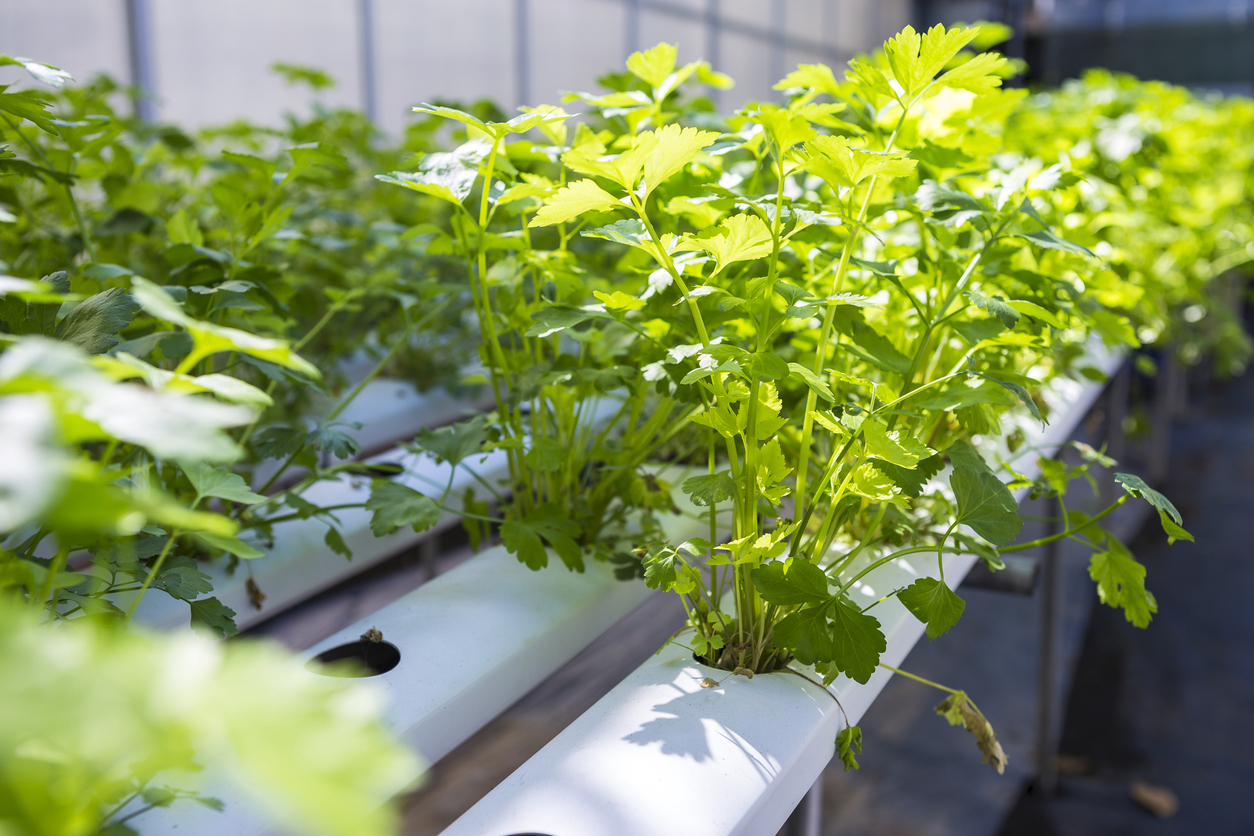
Celery is another plant that wants lots of water on demand, which makes it an excellent candidate for hydroponics. Celery will bolt easily in a garden (I imagine it pulling up its roots and shouting, “Let’s make a run for it,” even though I know that’s not what bolting is in this context), and the consistent conditions in hydroponic systems can keep the plants crispy, crunchy, and delicious throughout their relatively long growing season.
In fact, hydroponic systems can accelerate celery’s growth rate, allowing for a shorter time to harvest in addition to a longer growing season on the back end. Ideal conditions for hydroponic celery are 12–14 hours a day of light, a temperature from 68–77 degrees F (20–25 degrees C), and a pH of 6.0–7.0. Techniques that work for celery include DWC, NFT, and ebb and flow.
8. Sprouts
If you’re considering hydroponics but aren’t ready to set up a serious system, sprouts are a great way to dabble and get your feet wet (that is a metaphor — only the seeds get wet). That’s because sprouts don’t require the nutrient solutions, pumps, and aerators that power the growth of plants in other hydroponic systems.
Sprouting systems harness the energy and nutrients already contained in the ungerminated seeds. They don’t need light (underground seeds don’t have that luxury, after all), and just require regular rinsing and good ventilation to keep off microbial pathogens. You can grow hydroponic sprouts in a sprouting tray, jar, or bag. Here’s our comprehensive beginner’s guide to sprouting.
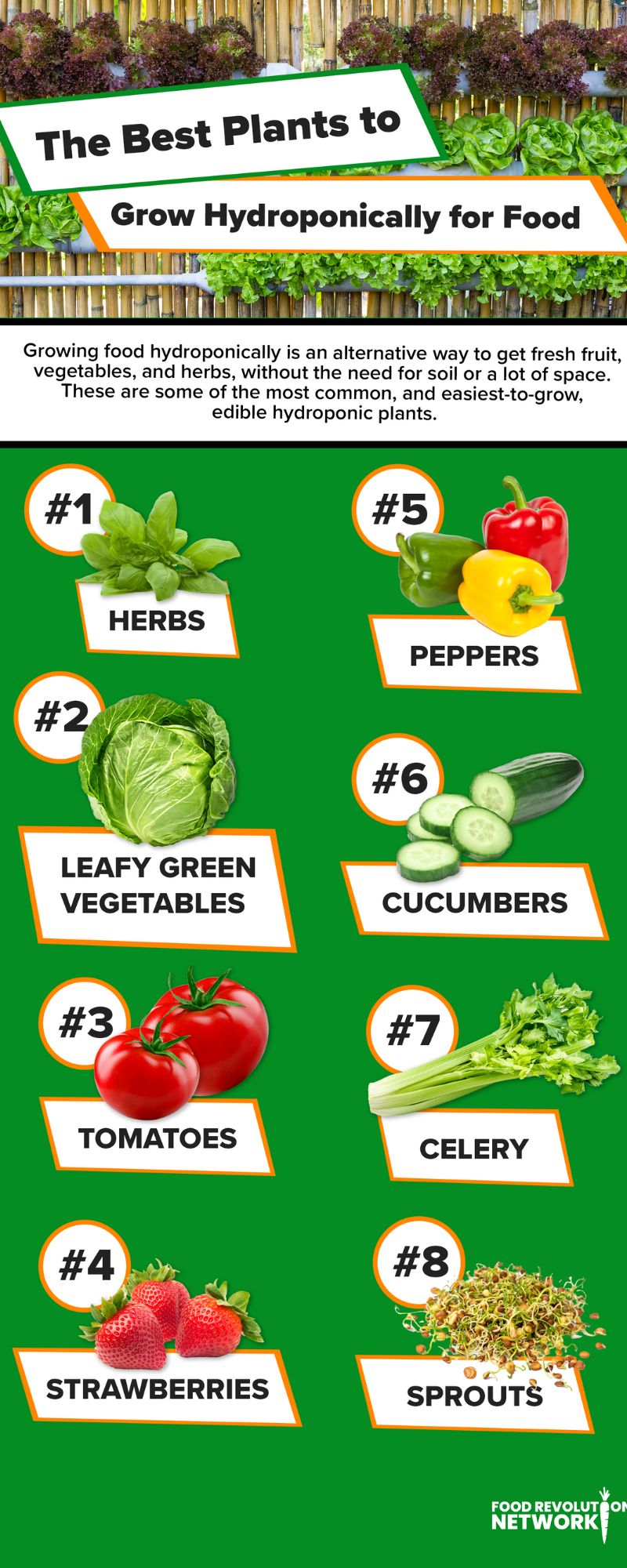
Hydroponic Gardening Recipes
Once you’ve got the hang of cultivating your own homegrown veggies, have some fun in the kitchen with these hydroponic-friendly recipes! From breakfast to snacks and hearty mains as well, there’s a special satisfaction in creating meals from plants you’ve watched grow from tiny seeds.
1. Strawberry Shortcake Overnight Oats
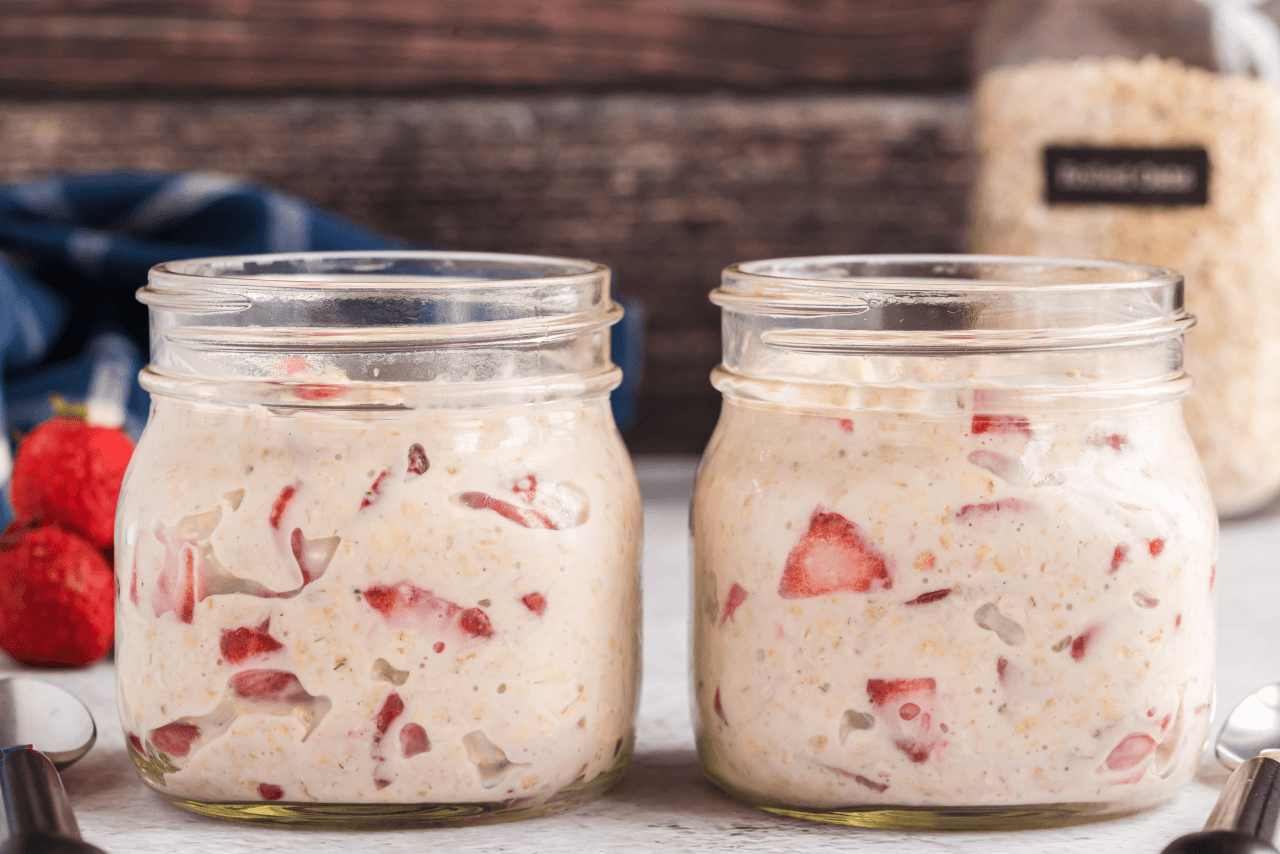
Transform those fresh hydroponic strawberries into a delightful, dessert-like overnight oatmeal that’s not only simple to prepare but also rich in taste and nutrition. This breakfast option combines the natural sweetness of strawberries, loaded with vitamin C and antioxidants, with the hearty, fibrous goodness of oats for digestive wellness. Just imagine the fresh sweetness of your hydroponically-grown strawberries infusing every bite of this oat-inspired breakfast treat — a true testament to your gardening efforts, and a perfect start to your day.
2. Roasted Balsamic Basil Tomatoes
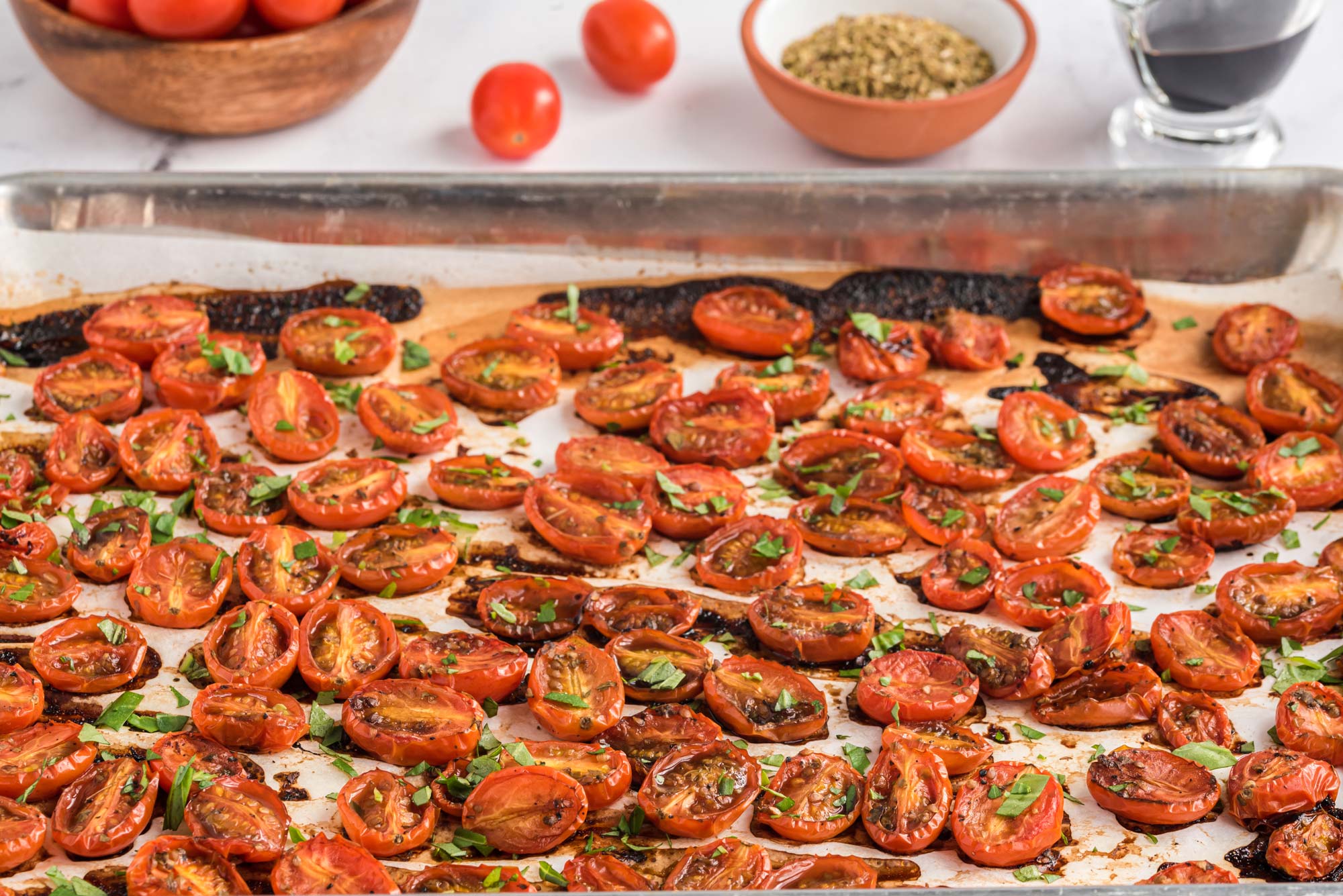
Tomatoes, basil, and balsamic vinegar seem like a trio destined to be together, don’t they? This is especially the case when the basil and tomatoes come straight from your hydroponic garden. The flavors blend so seamlessly together, creating a delightful snack on its own or a perfect topping for whatever dish you’re craving.
3. Mighty Green Tortilla Pesto Pizza

Dark leafy greens and sweet basil shine in this Mighty Green Tortilla Pesto Pizza! Use either kale or arugula (whichever you have growing in your hydroponic garden) in our tasty Kale Walnut Basil Pesto to add a plant-powered punch. Layer on your preferred leafy greens for an extra burst of freshness, and top it off with nutty Vegan Walnut Parmesan for a savory cheesy bite. This recipe turns your hydroponic greens and herbs into a delicious, green-filled pizza delight!
4. Creamy Cucumber Dill Salad
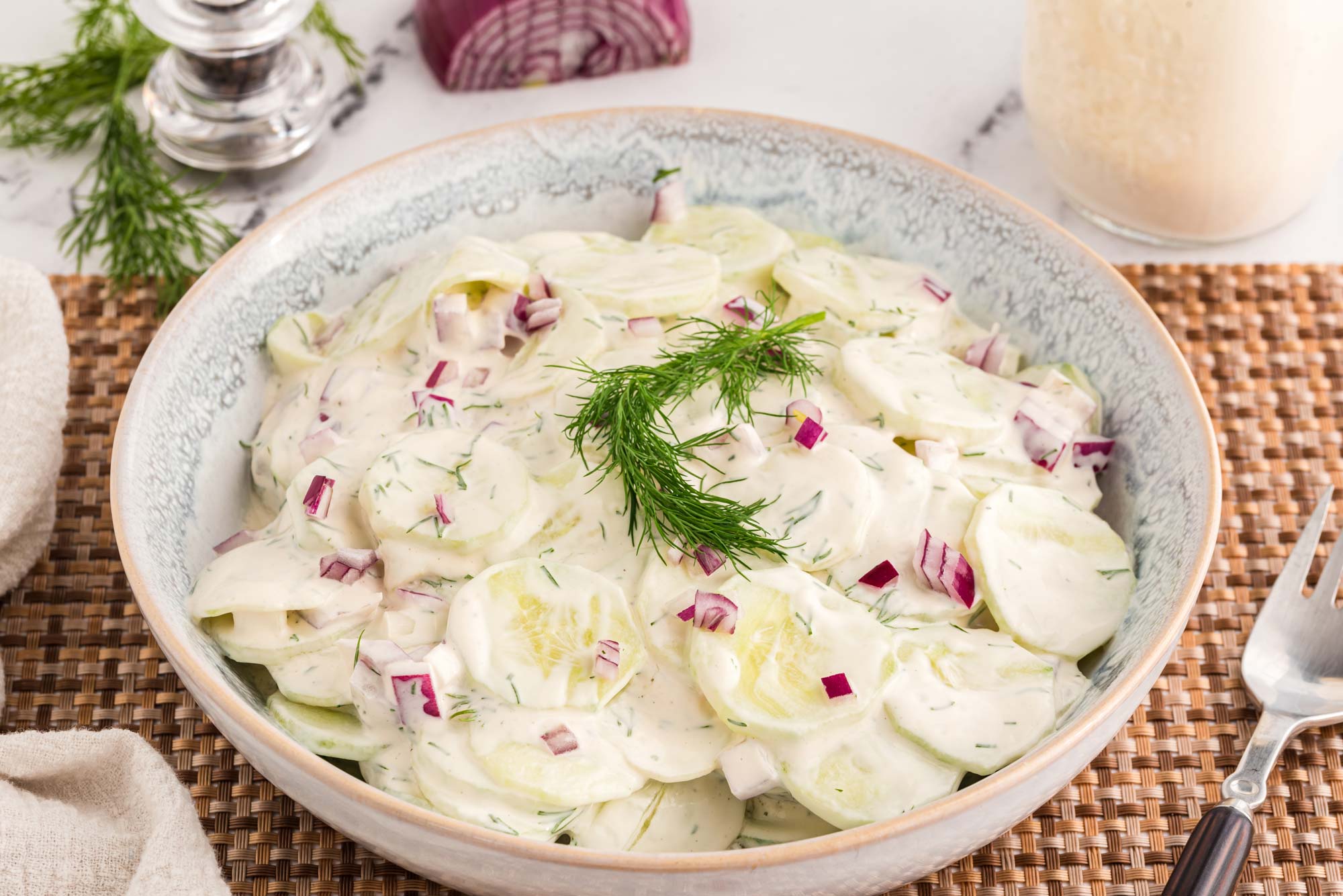
Give your cucumbers a delightful upgrade with this Creamy Cucumber Dill Salad. Cucumbers and dill thrive in hydroponic gardens, making them easy to grow right at home. If dill isn’t part of your gardening plans, no worries! Switch it up with other hydroponic-friendly herbs like parsley, cilantro, or basil to customize this salad to your herb availability and taste preferences.
5. Sprouted Mediterranean Crunch Avocado Bowl
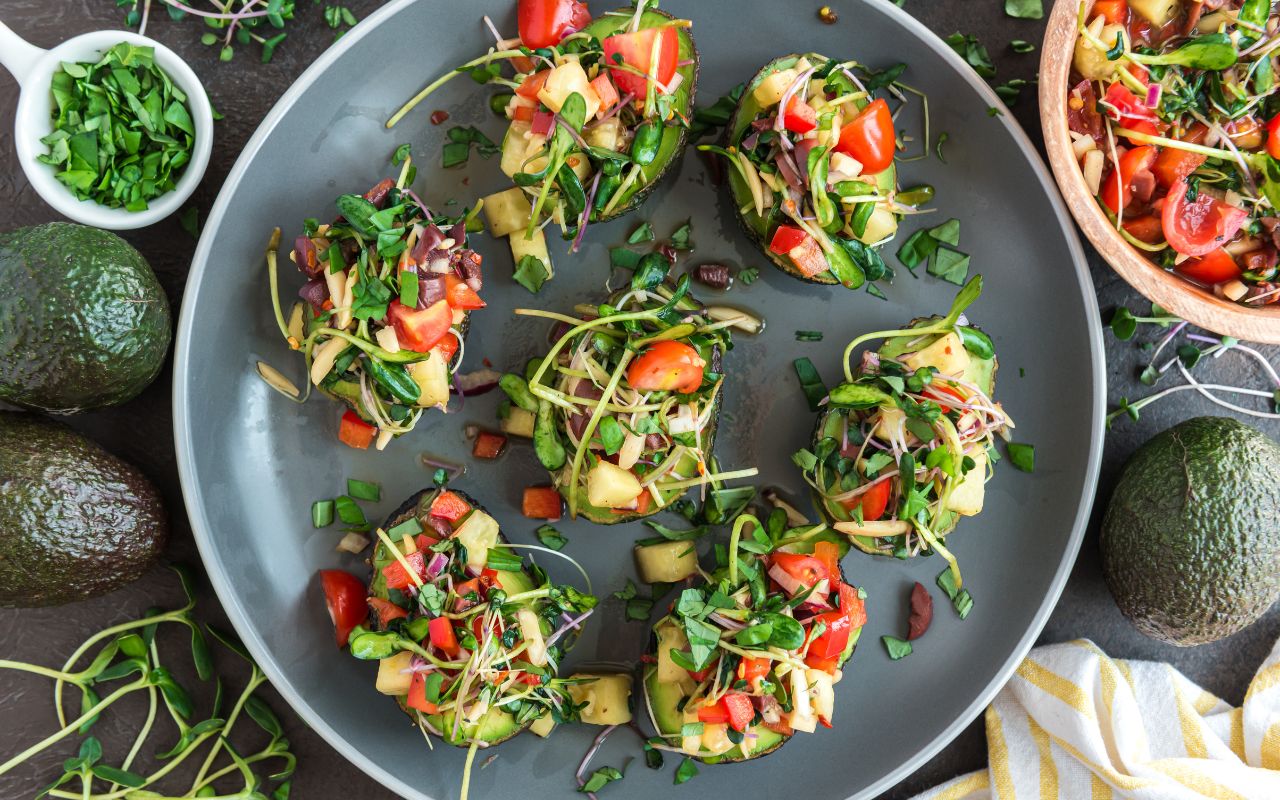
You might just get a chance to use all of the hydroponic veggies growing in your indoor garden with this recipe — how exciting is that? This dish offers a variety of textures, from creamy to crunchy, and a variety of flavors, from sweet to earthy. Umami olives and tomatoes, sweet red bell peppers, deliciously earthy sprouts, and refreshing and light cucumbers come together to create a delightful salad in an avocado bowl. Plus, did we mention nutrition? With all of that freshly grown hydroponic produce, you’ve got an abundance of nutrients right at your fingertips!
Further Resources for Growing Food Hydroponically
If you want to go deeper into hydroponics before getting started, the next step I recommend is to check out our in-depth article on the technique.
These books on hydroponics are also excellent resources to give you the confidence to start growing hydroponically:
And if you’re in a university town, your local cooperative extension office can also provide you with advice, resources, and maybe even a local expert who can take you from total newbie to practicing hydroponicist (that may not be a real word yet, but it’s definitely needed).
Get Growing with Hydroponics!
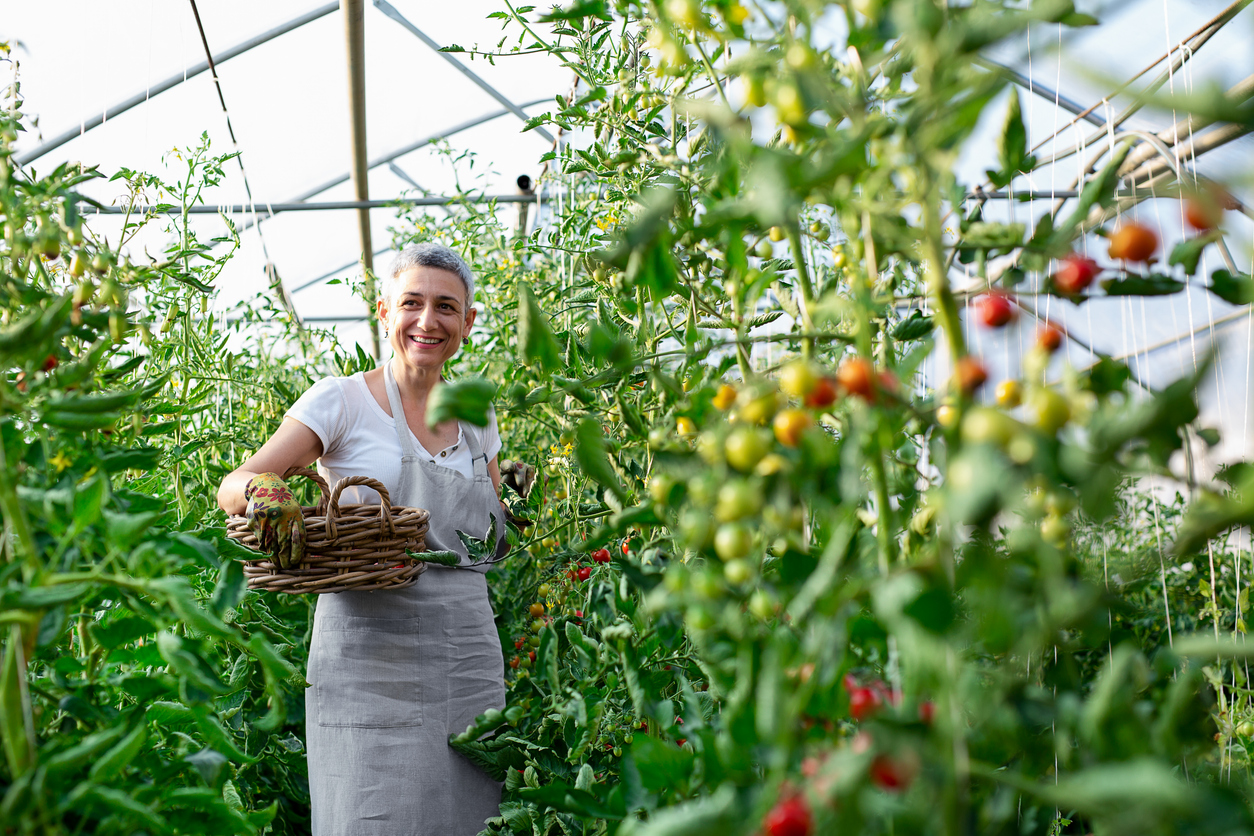
This soilless cultivation method not only saves space, but also could help to address global challenges such as water scarcity, food security, and environmental degradation. By choosing to grow food hydroponically, you can enjoy the bounty of your labor in a variety of fresh, nutritious meals. The journey into hydroponic gardening is an invitation to participate in an agricultural revolution — one that promises efficiency, sustainability, and a closer connection to the food you consume.
Tell us in the comments:
- Do you garden? What do you think of hydroponics as an option or a gardening alternative?
- What crops would you grow if climate and soil conditions weren’t obstacles?
- Do you currently grow sprouts in your home? Which ones?
Featured Image: iStock.com/ArtistGNDphotography
